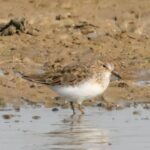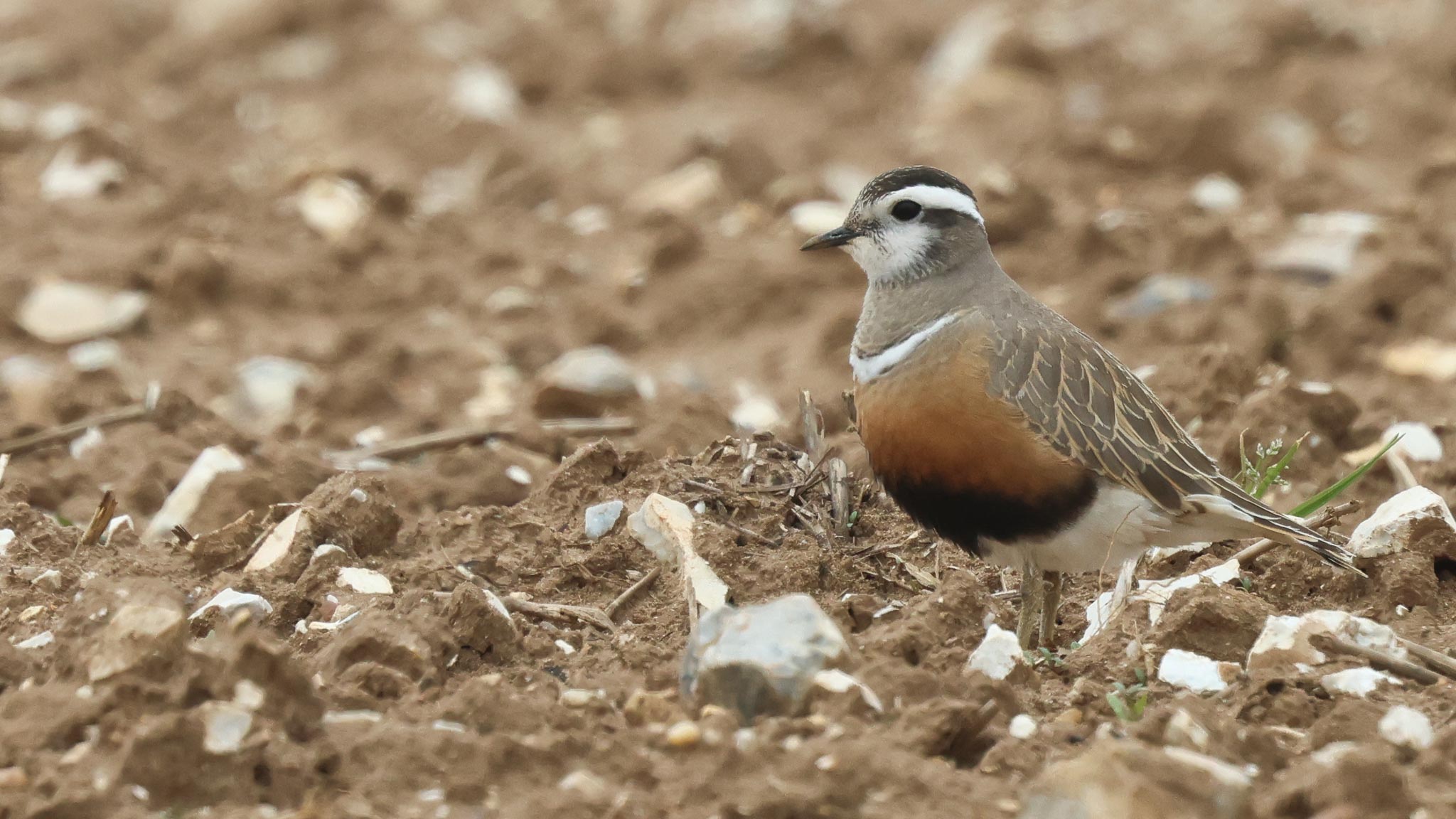A single day Autumn day tour today. It was a lovely day, bright with some nice autumn sunshine at times, although there was a rathery blustery and cool west wind. We spent the day along the North Norfolk coast.
Our destination for the morning was Titchwell. We parked in the overflow car park and had a quick look in the bushes, but there were no obvious signs of any migrants having arrived overnight. A Redwing flew overhead teezing and a Siskin called as if passed over too. As we stopped to use the facilities, a tit flock moved through the trees. We watched several Long-tailed Tits enjoying the morning sun, along with Blue Tits and Great Tits, a Coal Tit and a Goldcrest. A Song Thrush and a couple of Chaffinches fed between the parked cars.
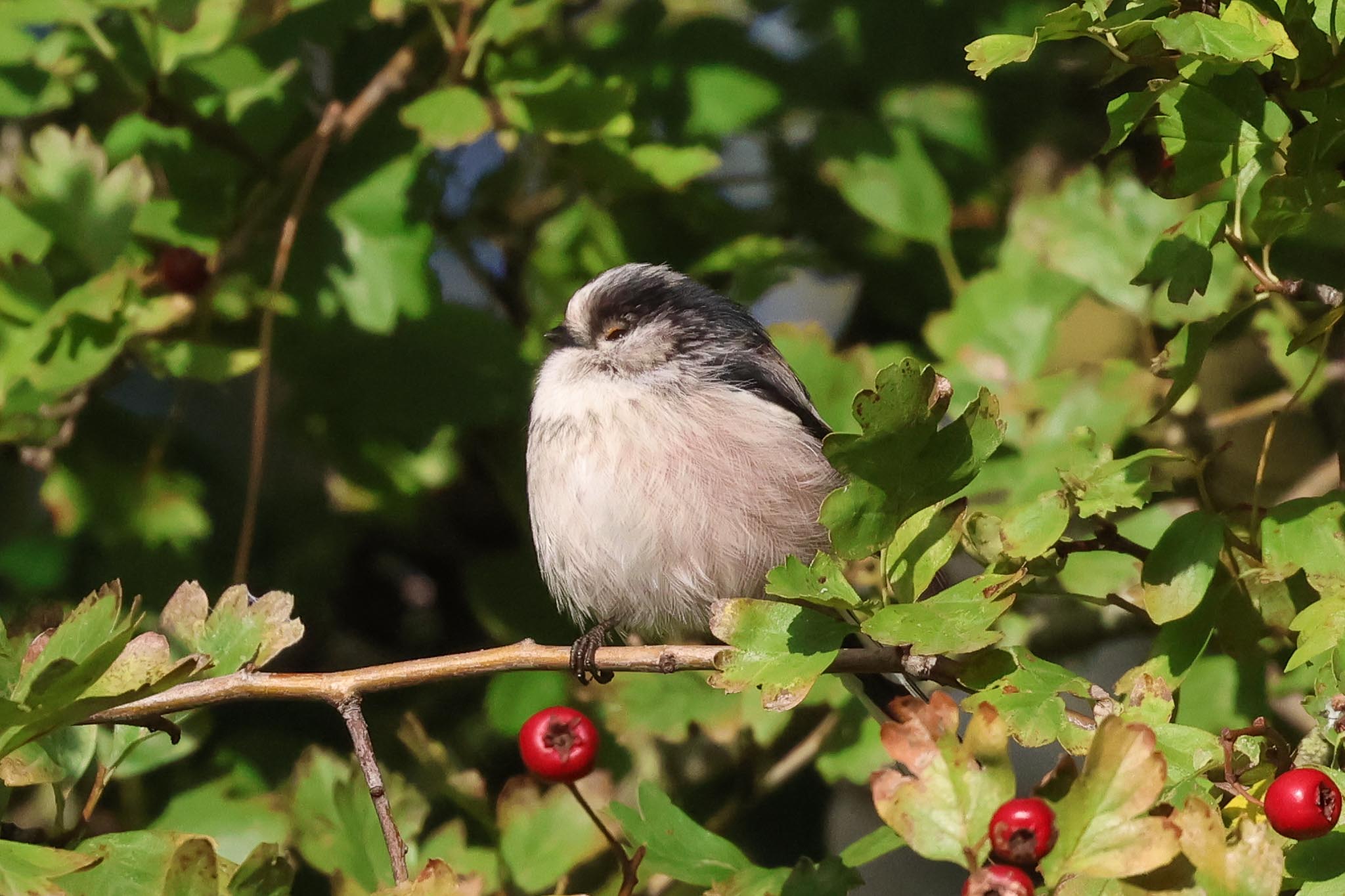
Continuing on out onto the reserve, we were out in the breeze beyond the trees. A Marsh Harrier quartered over the back of the reedbed, a Kestrel was hovering in the distance and a Common Buzzard circled up out of willow wood. There didn’t seem to be a lot of birds moving this morning, but as we started to walk on, a flock of about 30 Siskin flew past us over the path and we watched as they carried on west towards Thornham. Presumably freshly arrived from Scandinavia for the winter, it is always nice to see some migration in action at this time of year.
We stopped by Island Hide to look at the Freshmarsh. It seemed a bit too breezy for Bearded Tits but when we heard pinging we looked across to see one perched in the tops of the reeds briefly. Unfortunately, but perhaps unsurprisingly, it didn’t linger, but shortly after we saw two Bearded Tits fly up and zip away over the tops of the reeds. A Cetti’s Warbler was shouting from the sallows by the hide but remained typically well hidden.
The water levels are still too high for most waders on the Freshmarsh. There were still a few lingering Avocets on the first compartment, either dozing on the edge of the islands or feeding up to their bellies in the deep water. There were no waders at all on the next compartment over, just a few Black-headed Gulls and Wigeon. We could see a few Black-tailed Godwits further back and a lone Cattle Egret in with the Greylags on one of the further islands. There had been a Little Stint on here earlier, over the high tide, but all the small waders had apparently gone out onto the saltmarsh to feed.
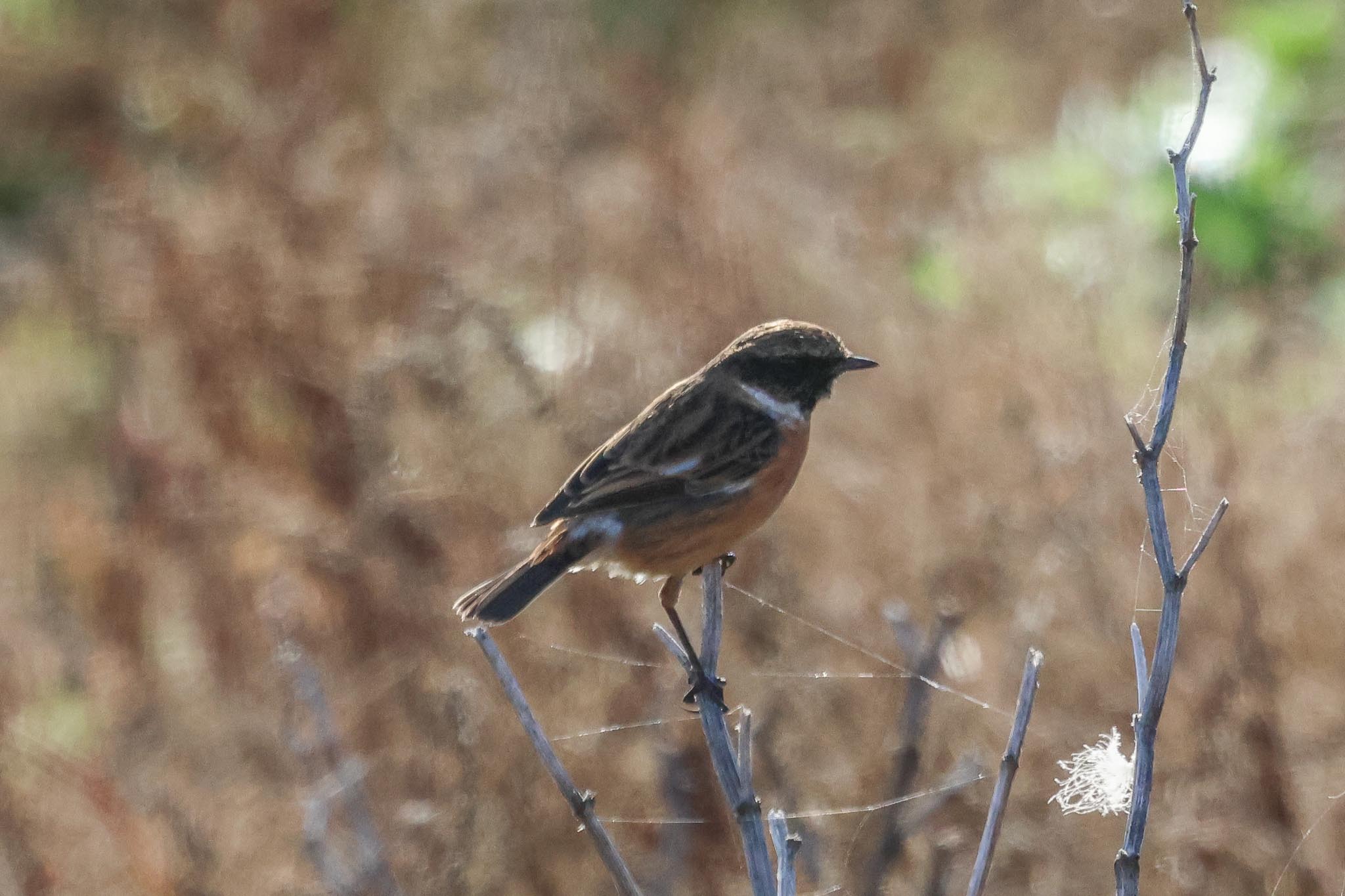
We decided to have a look from Parrinder Hide, where we would be out of the wind for a bit. There were a few more waders on the far compartment – as well as the Black-tailed Godwit, we found several Ruff around the islands. A Ringed Plover dropped in on the grass in front of the hide. We saw the Little Stint fly back in with a Dunlin, but they dropped down out of view behind Avocet Island, where it would be more sheltered. A Stonechat kept flitting up onto the top of the thistles on the bund in front of the hide.
We had a closer view of the Cattle Egret from here. Looking through the Greylags on the islands, we noticed one slightly smaller goose asleep had a very distinctive blackish belly patch, a White-fronted Goose. At the other end of the same island, a single Pink-footed Goose was preening, and we could see its smaller, darker bill compared to the big orange carrot bills of the Greylags.
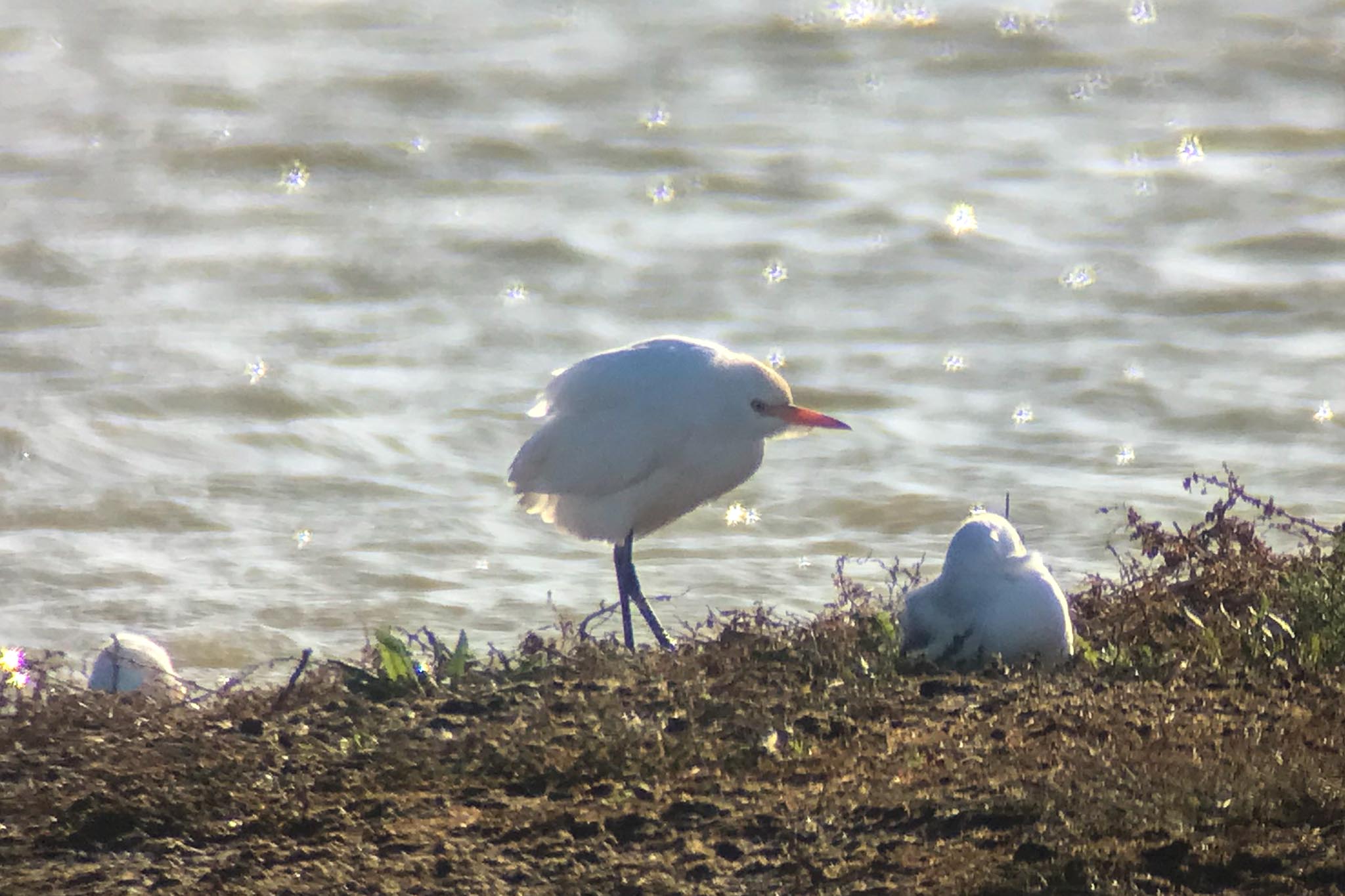
Back out into the wind, we pushed on towards the beach. With the tide having just gone out, there were lots more waders feeding in the deep channel at the far end of Volunteer Marsh, lots of Black-tailed Godwits and Redshanks, a few Curlew and Dunlin, a couple of Grey Plover and Ringed Plover. We stopped and got the scope on them. A small flock of Linnets flew over the bank and a Rock Pipit flew past calling.
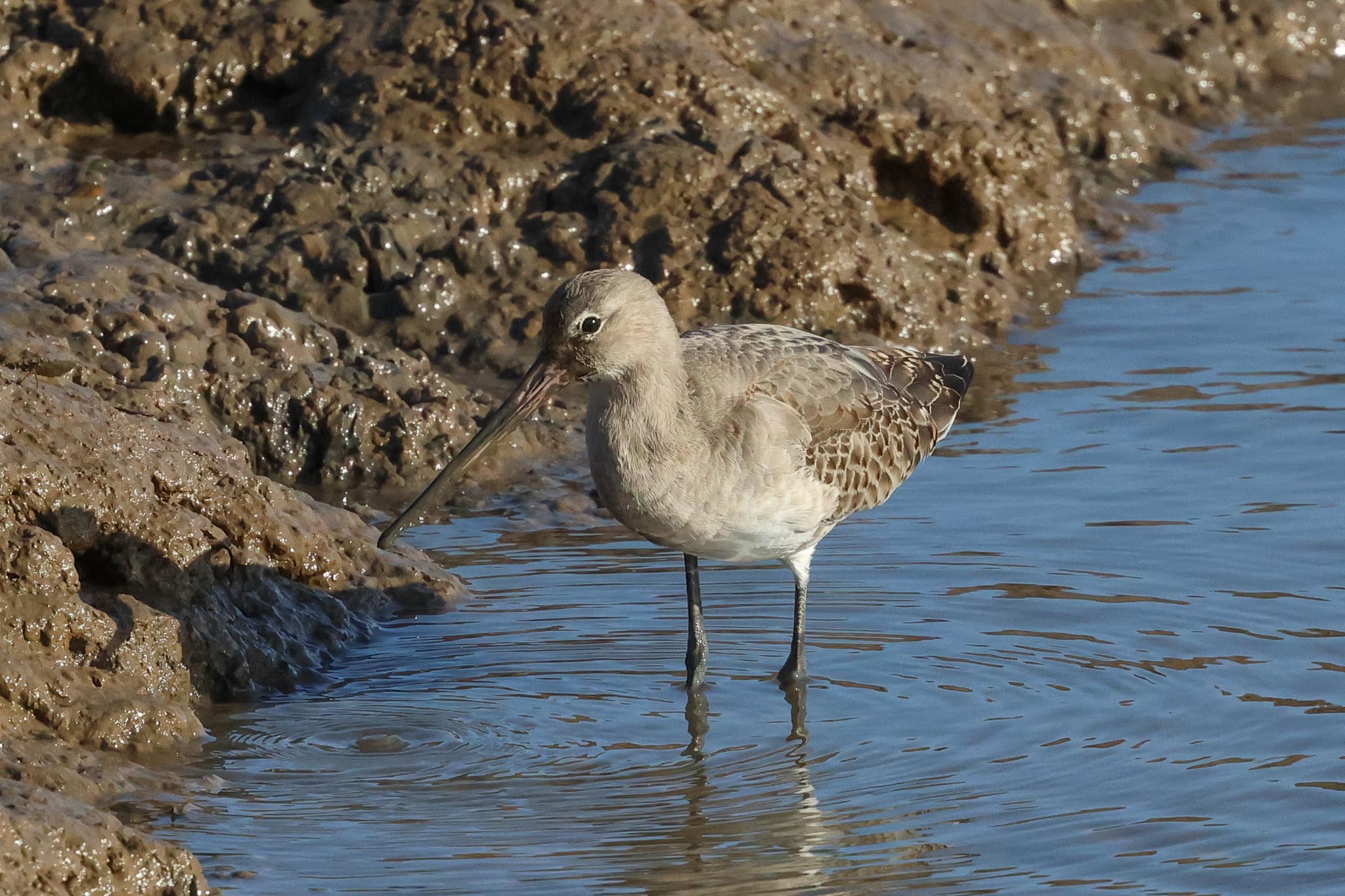
After the recent big tides, the (not-so-tidal) Tidal Pool was full of water, so we continued on to the beach. The mussel beds were still covered with water, but there were quite a few waders out on the sand now. Oystercatchers, Bar-tailed Godwits and Sanderling, the latter running in and out of the waves in typical clockwork toy fashion. We couldn’t see anything on the sea itself, although there were some distant Gannets flying past.
It was not the weather to linger out on the beach today, so we turned to walk back. As we got back to the Freshmarsh, there was a small group of Golden Plover on one of the islands now, which we got in the scope, looking very golden in the sun. We had just picked up the Little Stint, on the edge of one of the islands right at the back, when all the waders spooked. The flock of Golden Plover whirled round over the water calling. False alarm, and as they settled down again more Golden Plover flew in from the fields to join them.
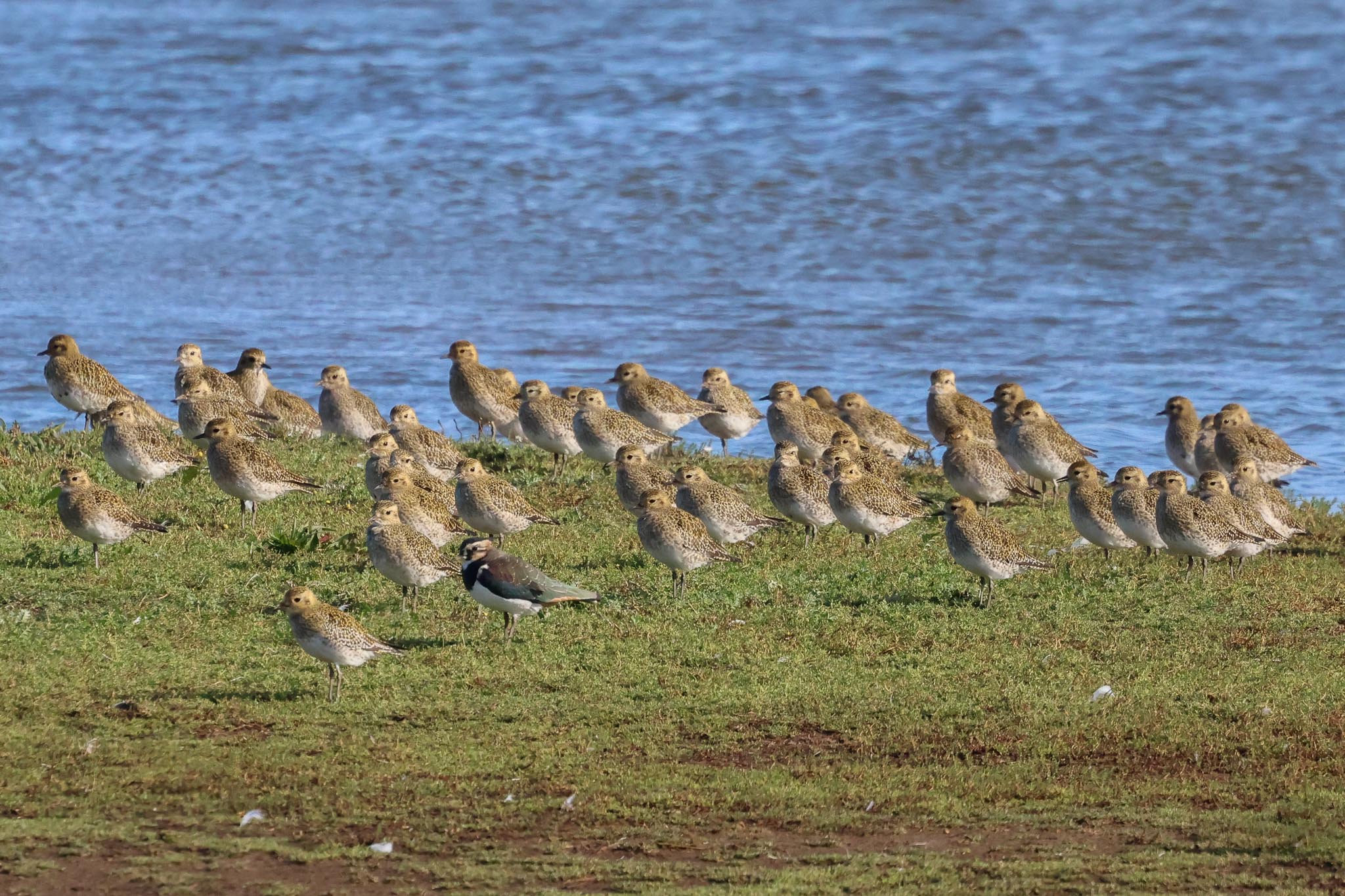
There was no further sign of the Little Stint at first though, and we had almost given up on it when it reappeared on the same island at the back. This time, most of the group got a look at it through the scope before it flew again, though it was still very distant.
The Yellow-browed Warbler which has been here for the last few days was reported again along Fen Trail while we were out at the beach, so we cut in along Meadow Trail. We hadn’t gone far along the boardwalk when we heard Long-tailed Tits calling in the sallows so we stopped to see what was with them. We did have another Goldcrest which this time picked its way around the sallows until it was right over our heads, but nothing rarer.
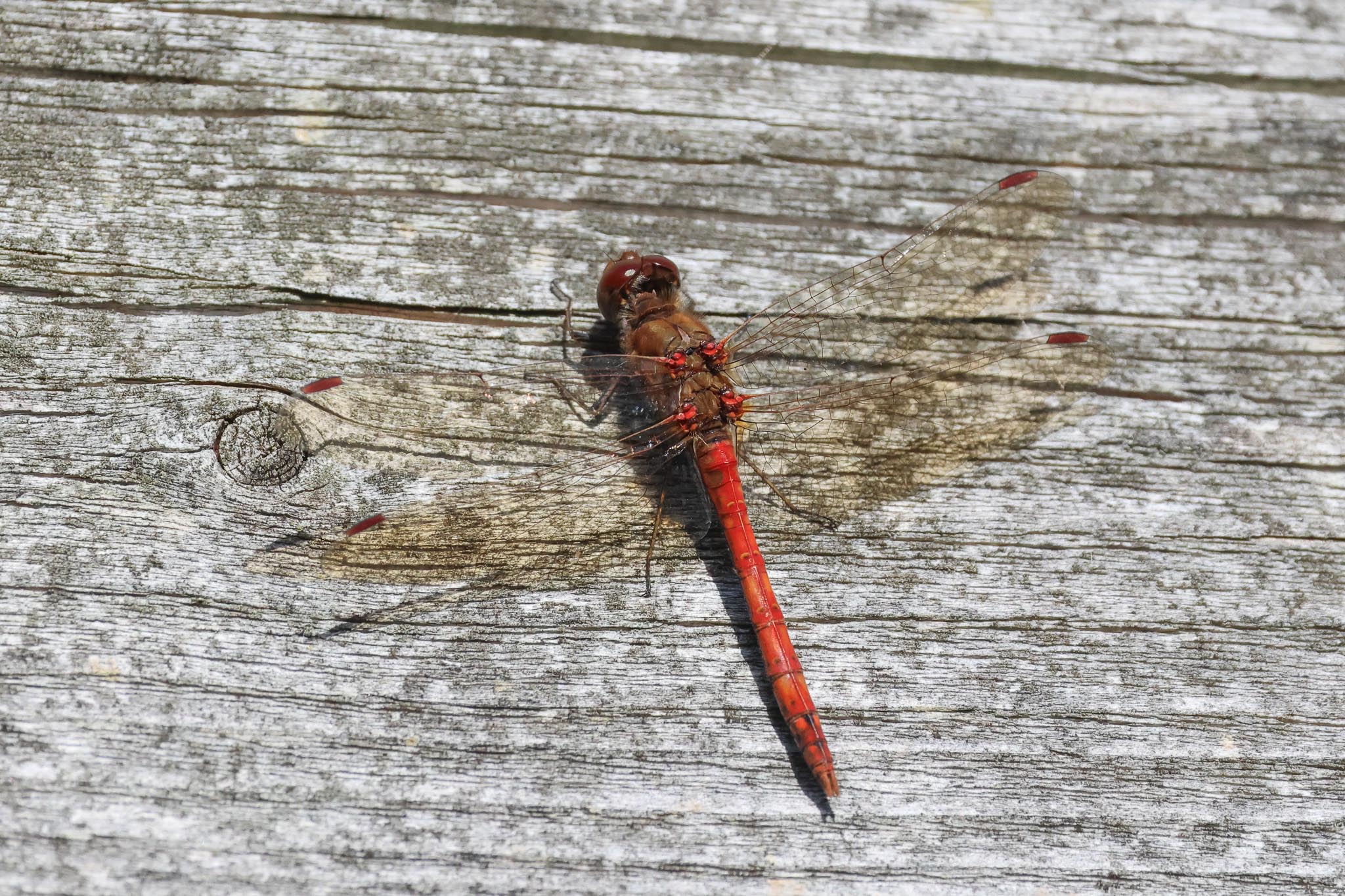
We followed the flock round and lost them at the back of the dragonfly pond. Out of the wind here, there were lots of Common Darter dragonflies basking in the sunshine, and a few Migrant Hawkers still hunting over the reeds. Continuing on round past Fen Hide, there was another report of the Yellow-browed Warbler in the sallows at the back of the overflow car park. We walked on to the Tank Road, which overlooks the back of those sallows, but once again there was nothing in the trees here now.
We had a quick look at Patsy’s Reedbed. There were just a few Coot and a Tufted Duck out on the water, but we caught a glimpse of a Kingfisher disappearing behind the reeds at the front. After a minute or so, it flew out again, across the water away from us in a flash of electric blue, and landed in the reeds at the back. We got it in the scope so we could all have a close look at it. A nice bonus.
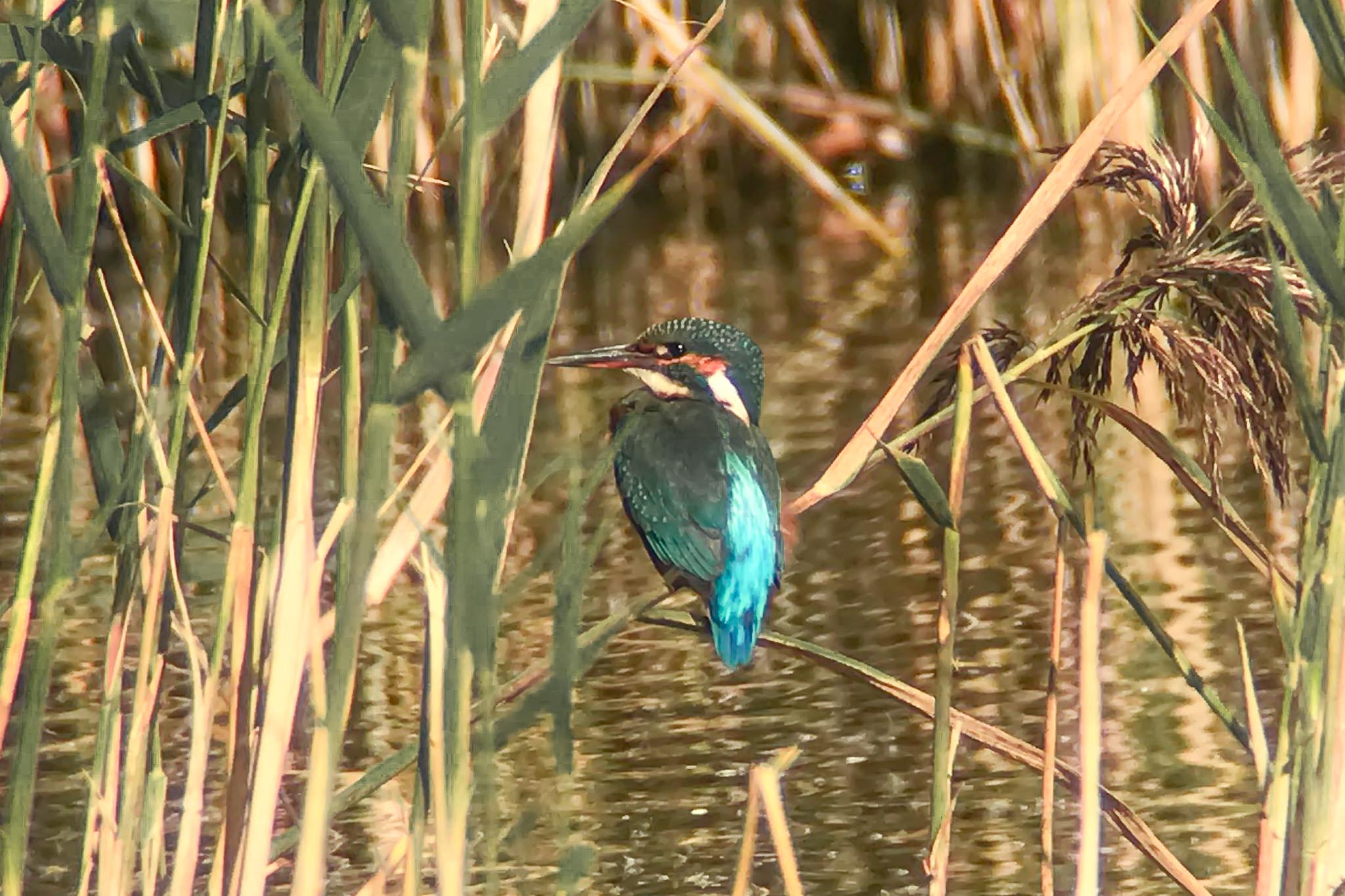
It was time for lunch now, so we made our way back round via the Visitor Centre to the picnic area. A Goldcrest was feeding in the ivy as we were eating and we were just finishing up when a tit flock came out of the sallows and flew up into the trees. A Treecreeper flew across with them and we watched it climbing up a tree trunk, but once again there was no sign of any warblers with them.
We decided to move on and head over to Holkham for the afternoon. As we got out of the minibus on Lady Anne’s Drive, a covey of Grey Partridge was feeding on the grass just beyond the fence. There were lots of Greylags out on the grazing marsh the other side, along with a couple of Egyptian Geese, a few Curlew and a Grey Heron tucked in the lee of the brambles at the back. Two Cattle Egrets appeared from behind the brambles, feeding around the feet of the cattle just beyond.
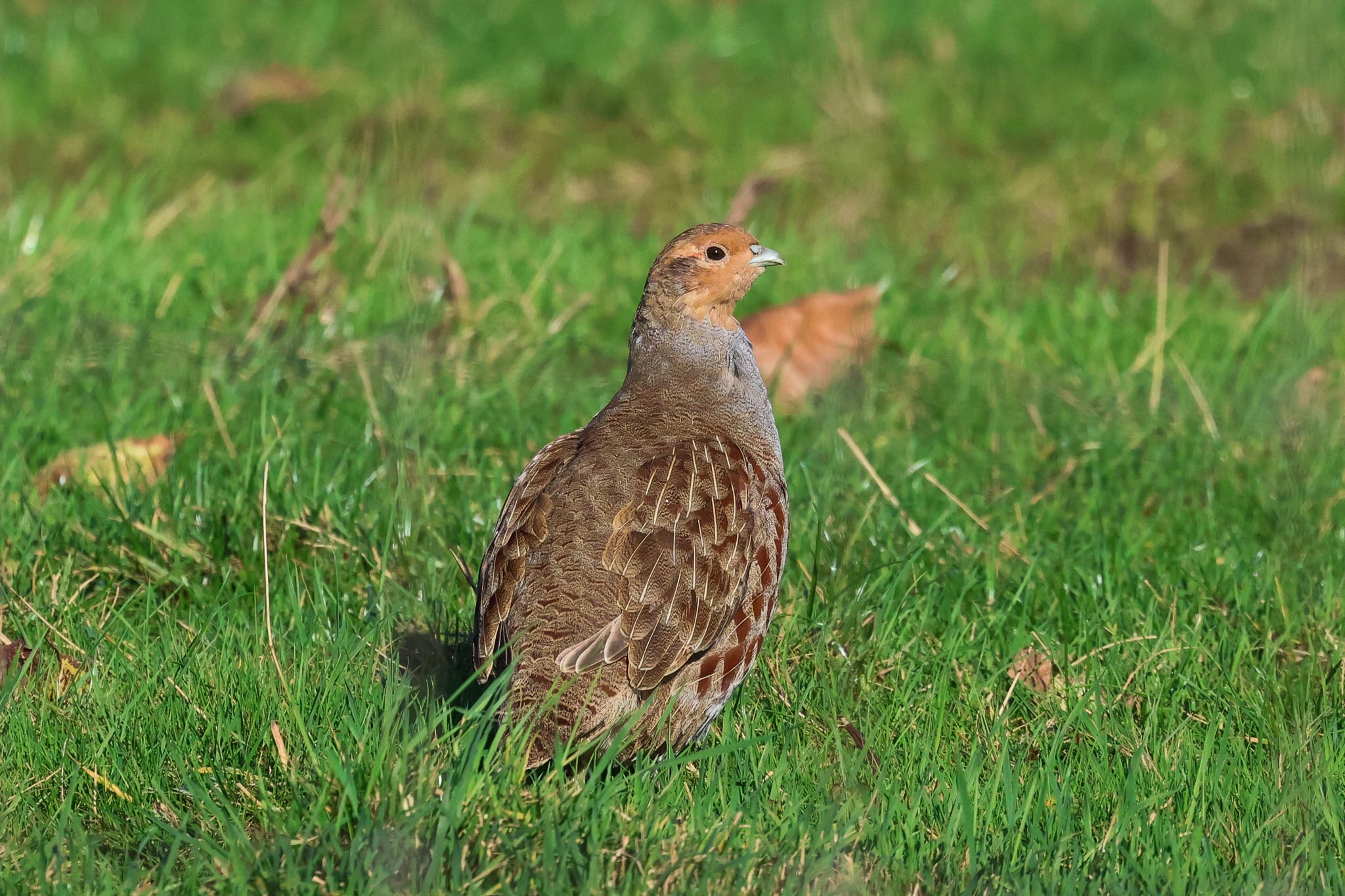
As we walked west, we were at least out of the wind, although it was still quiet at first in the trees. A few Jays called raucously and flew back and forth over the track. We stopped for a quick look at Salts Hole, where there were a few Little Grebes, along with a good number of Gadwall and a few Mallard too.
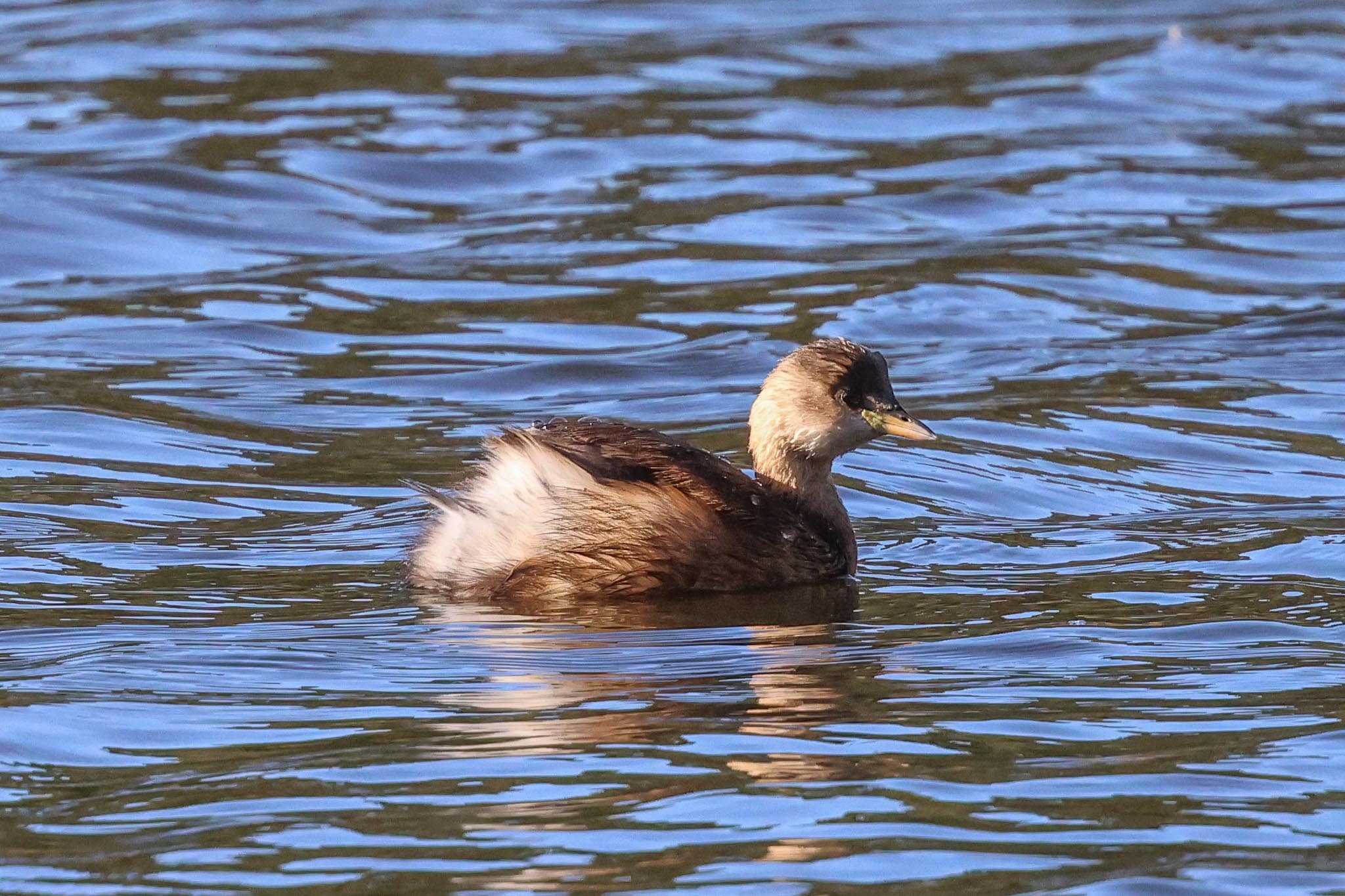
We came across our first tit flock here just the other side of Meals House. A Chiffchaff was calling rather hoarsely from the holm oaks and posed nicely in the sunshine, but we couldn’t find any other warblers in with them again. Then just before the crosstracks, we noticed several Goldcrests in a large oak by the path so we stopped to check and a Firecrest flew across into a small bush right beside us. Unfortunately it didn’t stay very long, flying back into a holm oak behind and then disappearing into the trees.
Joe Jordan hide has still not been repaired or replaced, so we scanned Decoy Wood looking over the wall. There have been two immature White-tailed Eagles from the Isle of Wight reintroduction project here recently, and one had been reported earlier this morning in the trees. A couple of people we spoke to on the walk out said they hadn’t seen it this afternoon though, and neither could we.
We set off to walk back. There were a couple of Red Admiral butterflies enjoying the sunshine and we hadn’t gone far when we noticed the Firecrest back in the oak tree where we had seen it earlier. It lingered a little longer now, so that everyone had a chance to get a look at it. There were several Goldcrests in the same tree too, their beady black eyes in the middle of a much plainer face than the stripier Firecrest.
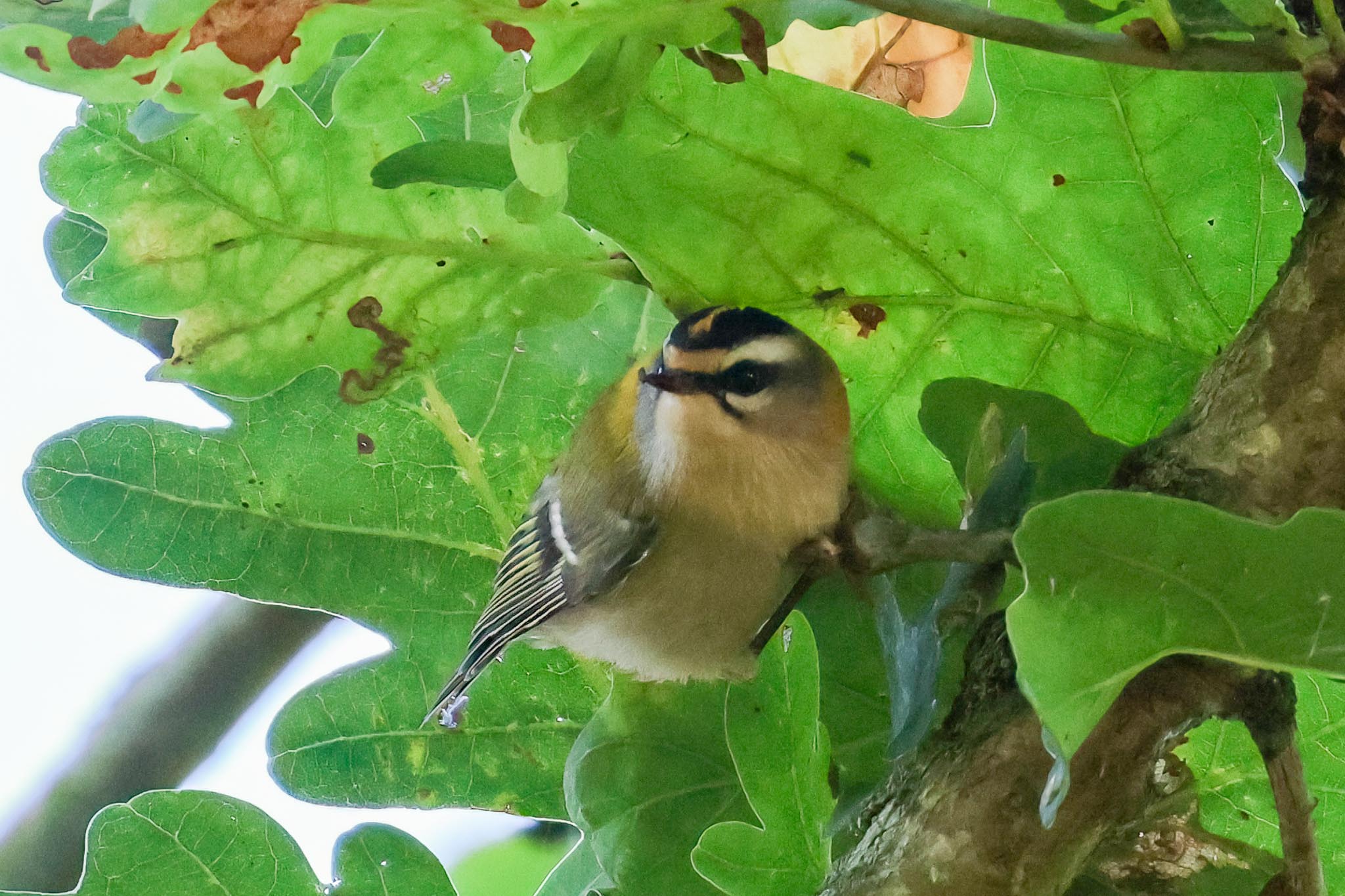
A nice bird on which to end the day, then it was time to head back to the minibus.




